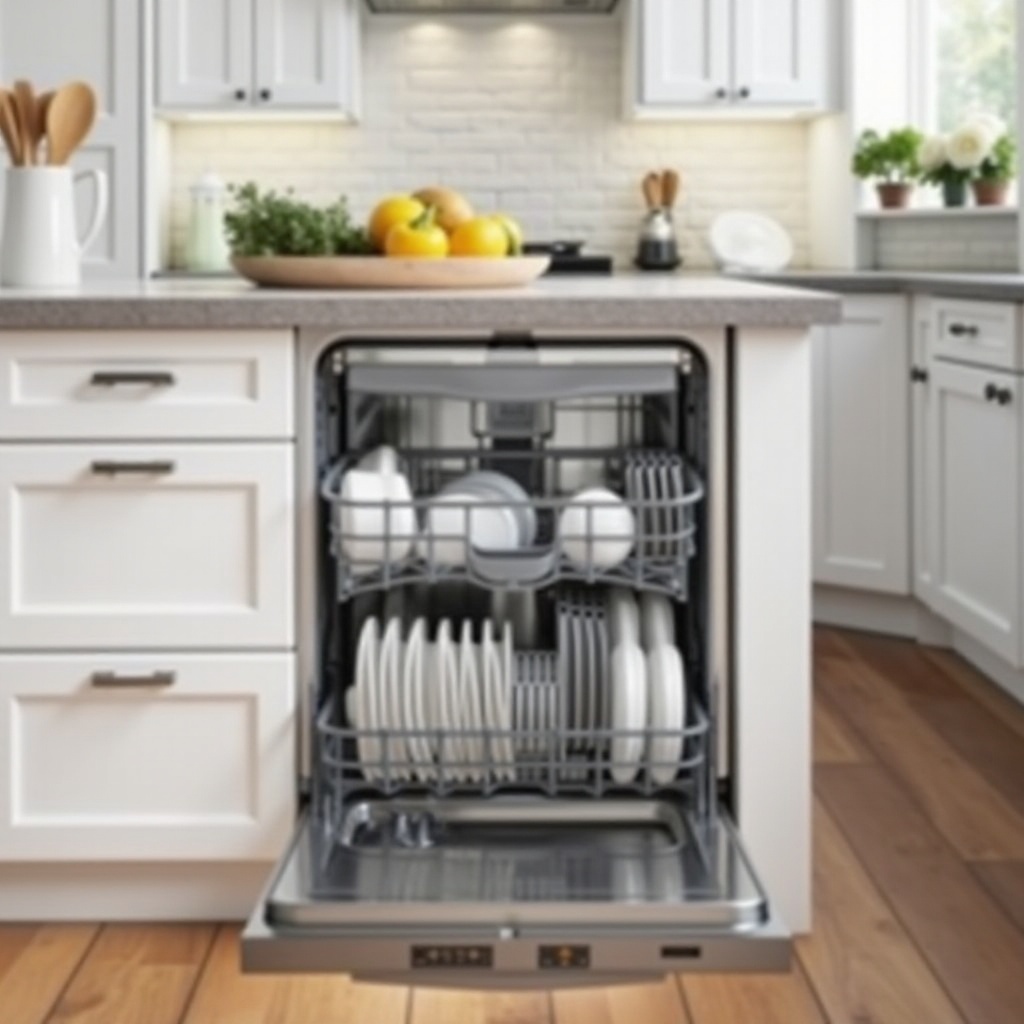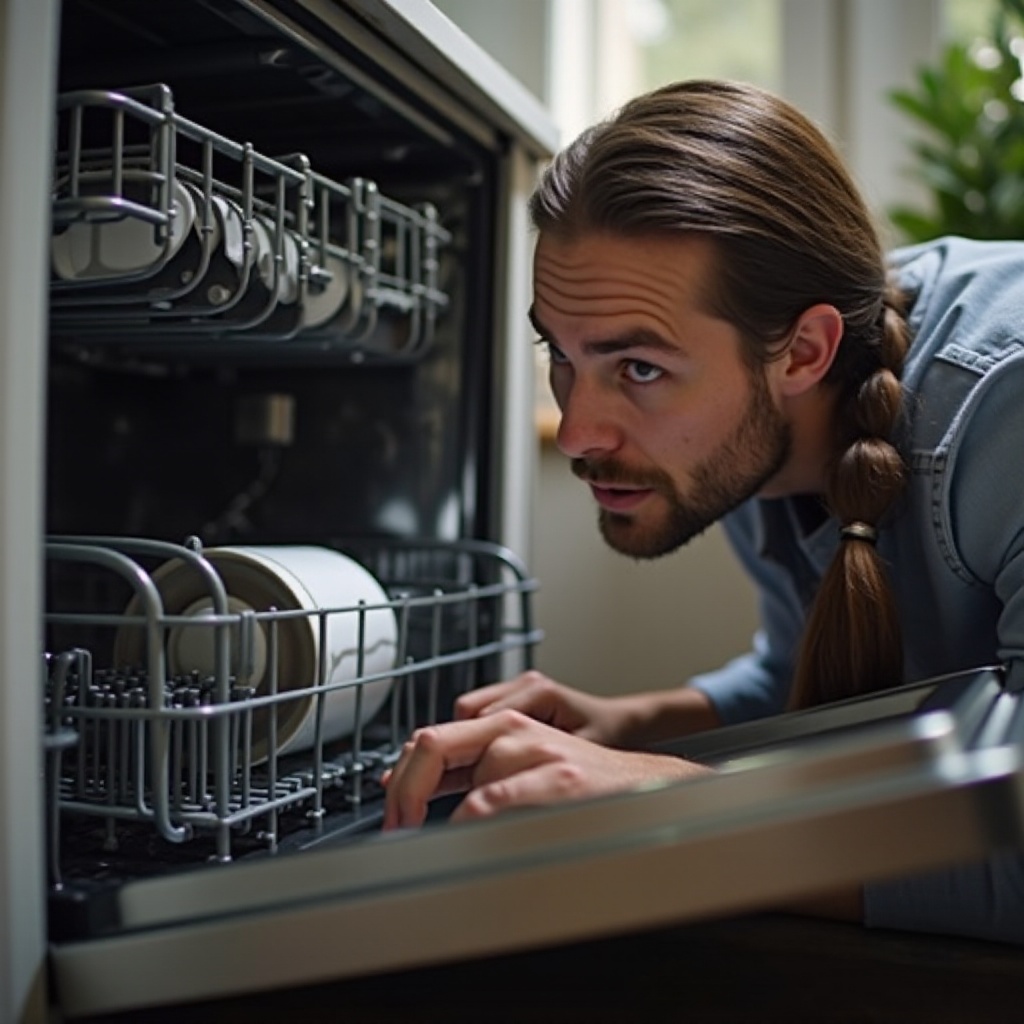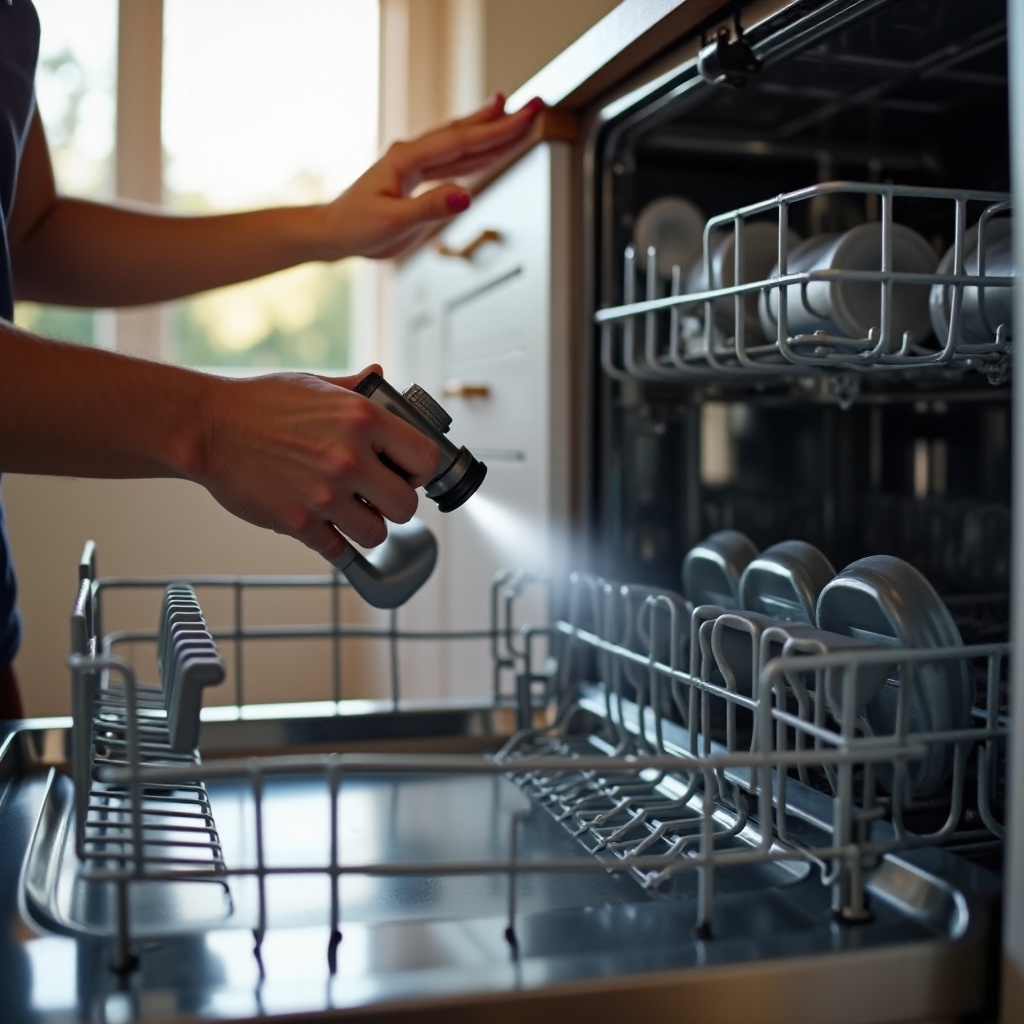Introduction
A dishwasher that refuses to run can be a major inconvenience in any household. Understanding the potential issues and how to fix them can save you time, money, and frustration. In this guide, we'll walk you through the most common reasons why your dishwasher might not be running, along with actionable solutions to help you get it back up and running.

Preliminary Checks
Before diving into more complex troubleshooting, start with some basic checks. These preliminary steps can often solve the problem quickly and with minimal effort.
- Ensure power supply is intact
First, make sure your dishwasher is receiving power. Check if the dishwasher's power cord is plugged in properly to the outlet. If the power cord is secure, the issue might be with the power outlet itself. Try plugging another appliance into the same outlet to see if it works. If the other appliance doesn't work either, the problem might lie with the outlet or a tripped circuit breaker.
- Confirm the door latch is secure
Modern dishwashers won't start if the door latch isn't secured. Ensure the door is completely closed and the latch is engaged. If the latch is damaged or not clicking into place, this might be the reason your dishwasher isn't running.
- Check control settings
Sometimes, the problem can be as simple as an incorrect setting. Ensure you've selected a wash cycle and pressed the start button. Some dishwashers have a delay start function, so confirm that isn't activated unintentionally.
With these preliminary checks, you might be able to resolve the issue quickly. However, if the problem persists, we need to investigate electrical issues that might be causing your dishwasher not to run.
Common Electrical Issues
Electrical problems are a frequent cause of malfunctioning dishwashers. Addressing these issues ensures that your appliance receives the power it needs to operate.
- Inspecting the circuit breaker
Head to your home's electrical panel and locate the circuit breaker that controls the dishwasher. Check if it's in the 'on' position. If the breaker has tripped, reset it by switching it fully off and then on again. A tripped breaker may indicate an electrical problem that needs further investigation.
- Examining plug and outlet connections
Ensure that the plug is tightly connected to the outlet. Look for any visible signs of damage to the plug or cord, which could indicate an electrical issue. Sometimes, a loose connection can prevent the dishwasher from running.
- Testing the outlet with a multimeter
Use a multimeter to test the outlet's voltage. If the multimeter does not show a reading of about 120 volts, the outlet may be faulty. In this case, you might need to call an electrician to resolve the issue.
If electrical issues aren't the cause, the problem might be mechanical. Let's explore potential mechanical failures next.
Mechanical Failures
Mechanical components can wear out or fail over time, preventing your dishwasher from operating correctly.
- Examining the water inlet valve
The water inlet valve controls the flow of water into your dishwasher. If it's faulty, the appliance won't get the water it needs to run a cycle. Locate the valve (typically found behind the dishwasher's lower kickplate) and test it by turning on the valve manually. If no water flows, the valve might need replacement.
- Inspecting the motor
The motor is crucial for circulating water during the wash cycle. A broken motor prevents the dishwasher from running. Listen for any unusual noises when trying to start the dishwasher, as these could indicate motor trouble. Motor inspection, testing, and replacement may require professional help.
- Checking the float switch
The float switch is a safety device that prevents the dishwasher from overflowing. If it's stuck in the 'up' position, it can signal the dishwasher to stop running. Make sure the float moves freely. If it doesn't, clean around its base to remove any debris.
Now that mechanical issues are inspected, it's important to consider obstructions that could be hindering your dishwasher's operation.

Addressing Clogs and Obstructions
Clogs within the dishwasher can hinder its functionality. Cleaning and clearing these obstructions can often restore normal operation.
- Cleaning the filters
Filters can get clogged with food particles and debris, restricting water flow. Locate the filters at the bottom of the dishwasher, remove them, and rinse thoroughly under running water. Regular cleaning of the filters is pivotal for maintaining optimal performance.
- Clearing the spray arm holes
Spray arms distribute water to clean your dishes. Over time, these holes can get clogged with food particles and mineral deposits. Remove the spray arms and clear any blockages using a thin brush or toothpick. Reattach the spray arms once they are clean.
- Ensuring the drain hose is clear
Kinks or clogs in the drain hose can prevent the dishwasher from draining correctly. Inspect the hose for any visible kinks. To check for clogs, disconnect the hose and flush it with water to ensure it's clear.
If your dishwasher still isn't running after addressing these common issues, consider seeking professional help and following regular maintenance tips to prevent future problems.

Professional Help and Maintenance Tips
Certain issues might require the expertise of a professional technician. Additionally, regular maintenance can help prevent many common problems.
- When to call a repair technician
If you've performed all the troubleshooting steps and your dishwasher still isn't running, it's time to call a professional. Complex electrical repairs, motor replacements, and control board issues are best handled by trained technicians.
Regular maintenance tips
Inspect and clean filters monthly: A simple rinse can prevent buildup and clogs.
- Run an empty cycle with vinegar: Once a month, run an empty dishwasher cycle with a cup of vinegar to remove mineral deposits.
Use dishwasher-safe descaling agents: Special products can further prevent scale buildup.
Recommended cleaning products
Use products designed specifically for dishwashers to keep them clean and running smoothly. Avoid harsh chemicals that can damage your appliance.
By adhering to these maintenance tips and knowing when to seek professional help, you can ensure the longevity and reliability of your dishwasher.
Conclusion
A non-running dishwasher can throw off your kitchen routine, but with proper troubleshooting, most issues can be resolved quickly. Start with basic checks and work through electrical and mechanical inspections, addressing any clogs or obstructions you find. Regular maintenance and knowing when to call a professional for help can keep your dishwasher running smoothly for years to come.
Frequently Asked Questions
Why is my dishwasher not running even though it has power?
There could be several reasons, including a faulty door latch, incorrect control settings, or an issue with your home's electrical supply. Follow the troubleshooting steps outlined above to identify and fix the problem.
How often should I clean my dishwasher filters?
It's recommended to clean the filters at least once a month. Regular cleaning helps maintain water flow and efficiency, preventing clog-related issues.
When should I call a professional to repair my dishwasher?
If you've tried the troubleshooting steps and your dishwasher still isn't running, it's time to call a technician. Professional intervention is necessary for complex electrical problems, motor failures, or control board issues.
